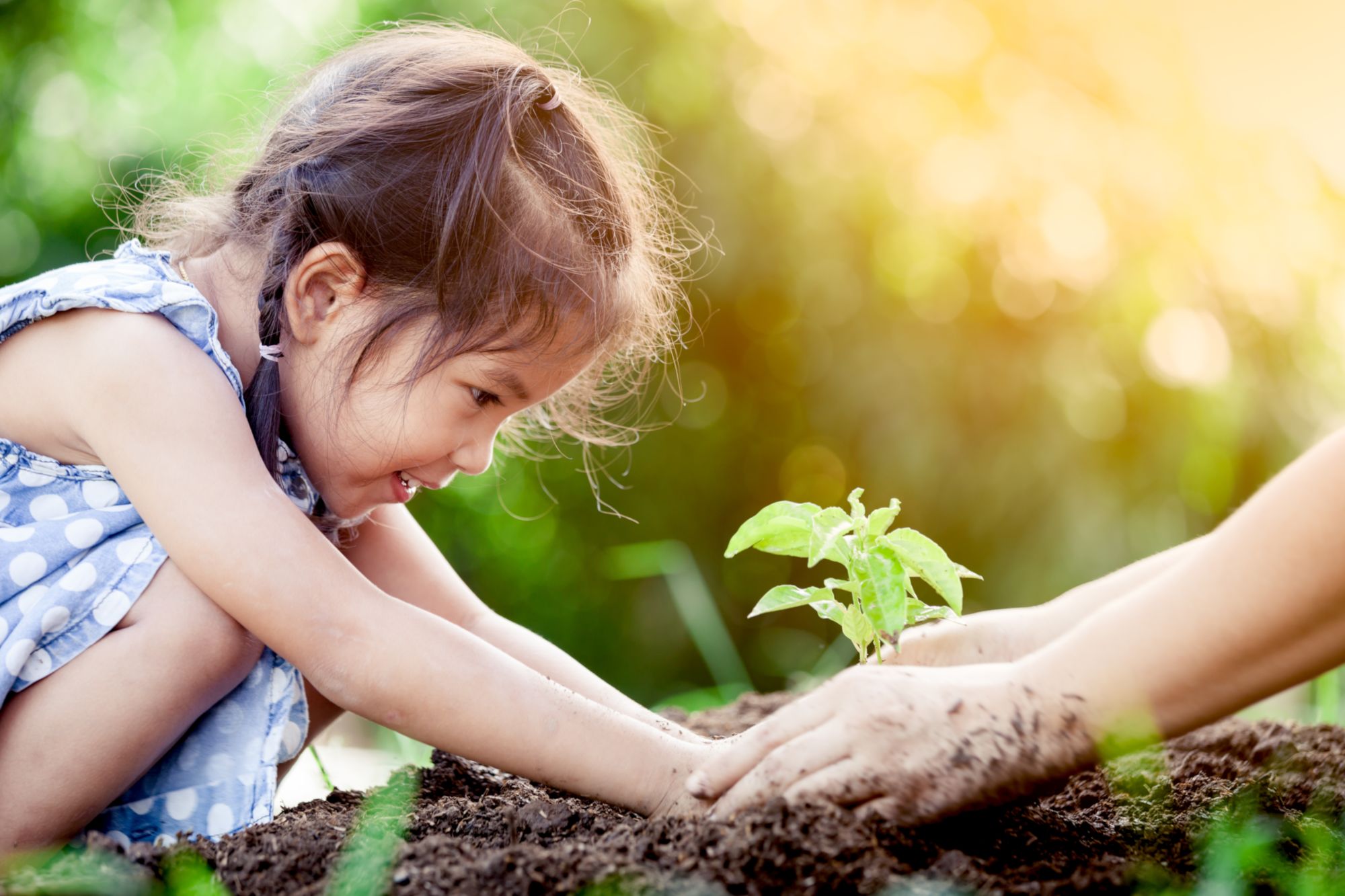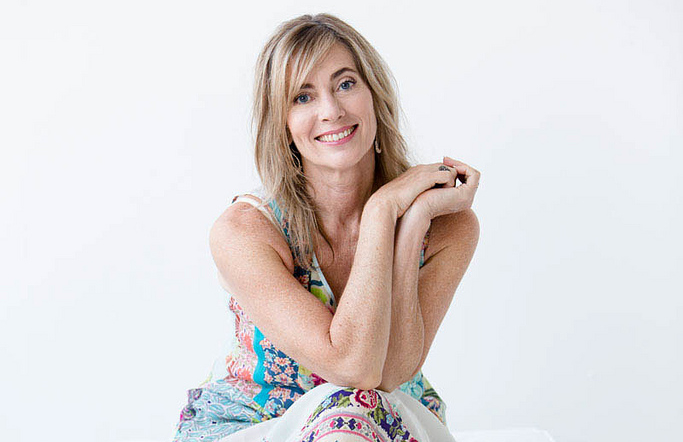Science was my least favorite subject in school. While good grades came easily to me, science was the first C I ever got on a report card in sixth grade (even in my 30s, my parents still remind me of this). In high school, I continued to struggle with the subject, and, in college, I even had to retake my science elective, geology, three times before scraping by with a C (or was it a C-?). And, yet, somehow, I came to teach science (and yoga) to children.
Let me rewind a bit. When I was a young girl, my free-spirited aunt gave me a book all about saving the planet. (This was the same aunt that would try to feed me dark, leafy greens, vegetables, and organic mac ‘n cheese when she watched me. While this may sound like an ideal, well-balanced meal for children today, my picky diet was limited to Kraft, Pasta Roni, Ovaltine, and various fast food items I cringe to think about now.) This book became one of my favorites. I read it over and over and took it with me everywhere I went. My granola-eating, tree-hugging, environmental science–studying aunt may not have realized it at the time, but she planted a tiny seed inside of me that has since blossomed into a mission to care for the planet, even if it is with baby – or shall I say preschooler shoe-sized – steps.
When I was in college, she had preschoolers of her own. Nannying for her boys taught me how to live a minimal-waste lifestyle. She stocked her kitchen with the same, healthy, whole foods she tried to get me to eat. As I prepared them for her boys each day, I learned to love them. In her kitchen, I also learned how to compost. Next to her sink sat a silver, metal bowl for food scraps. I was well-versed in separating recyclable items from the trash, but this was foreign to me. Still, I was intrigued and never once felt repulsed or inconvenienced. In fact, I bought a composting bin for my own house (despite my mother’s misgivings). When I became a teacher at the boys’ preschool, I turned an old coffee canister into a compost collector. The fact that I didn’t know what would happen or where to put the compost once these bins filled didn’t stop me; I figured it would motivate me to dig deeper into my newfound fascination.
Every sustainability question I had I brought into the classroom:
- In an attempt to reduce plastic pollution, what can we make out of plastic bottles?
- Which fruits and vegetables can regenerate?
- How can we repurpose old milk cartons, laundry detergent bottles, T-shirts, etc.?
- Can we plant the seeds from my apple, lemon, or the pumpkin I carved from Halloween?
- Can you throw any ole worms you find outside into your compost pile to help it decompose? (Spoiler alert: definitely not.)
A few years into my preschool-teaching career, I became as passionate about yoga as I am the environment. I started training to become a teacher. Surprisingly, the yogic path fit seamlessly with my eco-conscious curriculum. Similar to my curiosities about the earth, to help me integrate the concepts into my life, I started teaching my students what I was learning in my training (obviously in simplified terms). I’d practice the asana sequences I had to teach with them, I’d tell them certain stories from yoga philosophy (they loved hearing about Ganesh, the boy with the elephant head!), and in my earth-science lessons, I’d incorporate principles from the eight limbs of yoga, specifically non-harming.

Since then, I’ve created “True Nature,” a preschool program that explores yoga and caring for the earth. Below are some things I’ve found to be true – and why these two subjects go hand in hand, especially when it comes to educating children. Exploring nature (and yoga) helps children:
- Regulate emotions: While yoga and meditation is becoming more and more popular in school environments, thanks to their calming benefits, incorporating things found in nature can help them relate to their environment. For instance, discussing animals and living creatures can help them give names to complex emotions so they can express and move through them. Meanwhile, by moving the practice outside, children can reap the benefits of being outdoors.
- Move and release energy: A big reason I practice yoga is to move stagnant energy. Children can enjoy the same benefits! While yoga is known to be a calming, gentle practice, incorporating naturing offers creative ways for children to get their energy out. Recently, during one of my True Nature classes, I had a student who was being noisy and distracting. Rather than asking him to quiet down (my own yoga practice has taught me to be less reactive), I listened to what he was saying. He was demonstrating a “dragon’s breath,” something he had learned practicing yoga at home. I had never heard of this before, but I noticed how similar it sounded to “lion’s breath.” Although it wasn’t what I had planned, I let this boy feel heard and used his excitement as an opportunity for the children to try a different meditating technique in which they were able to mimic noisy animals and release some energy.
- Ground and focus attention: Asking active children to sit still can be a challenge, but, with yoga, it becomes a fun game or social activity. Introducing things found in nature can provide children with an anchor, something to focus their attention on while meditating (the sounds of the ocean, holding onto a rock or seed, etc.).
- Cultivate compassion: Connecting children with plants and animals teaches them to respect living creatures, and, in turn, each other.
- Be creative: When we discuss things like reusing, reducing, and recycling, we offer children the opportunity to problem-solve, to find creative solutions for things to make out of trash. We, adults, might see trash, but children might see treasure. (Forky, anyone?)
- Build resiliency: Creating space and a container for children to express their emotions and let out their energy allows them to feel safe. Additionally, yoga and connecting to nature can offer tools for self-soothing, learning how to extend love and care to themselves, others, and the world around them at an early age.

















2 replies on “6 Benefits of Teaching Children About the Earth (and Yoga)”
[…] I also slowly transitioned out of my glamorous, corporate job in the city I could no longer feign caring about back into a much lower-paying job as a preschool teacher. Returning to the job I had during college was the only work I could stomach while I figured out what to do next, plus it came natural. I instinctively knew being around children would help me nurture my own inner child. A preschool teacher by day, aspiring yogini by night, I started teaching what I was learning to my preschool students – mostly to help reinforce the lessons. I found that I loved translating yogic teachings to something children could understand and having conversations with them about their feelings. I wished I had been exposed to the tools I was learning earlier in life. Eventually, I moved from a lead teacher to launching my own preschool yoga program, called True Nature. […]
[…] I also slowly transitioned out of my glamorous, corporate job in the city I could no longer feign caring about back into a much lower-paying job as a preschool teacher. Returning to the job I had during college was the only work I could stomach while I figured out what to do next, plus it came natural. I instinctively knew being around children would help me nurture my own inner child. A preschool teacher by day, aspiring yogini by night, I started teaching what I was learning to my preschool students – mostly to help reinforce the lessons. I found that I loved translating yogic teachings to something children could understand and having conversations with them about their feelings. I wished I had been exposed to the tools I was learning earlier in life. Eventually, I moved from a lead teacher to launching my own preschool yoga program, called True Nature. […]